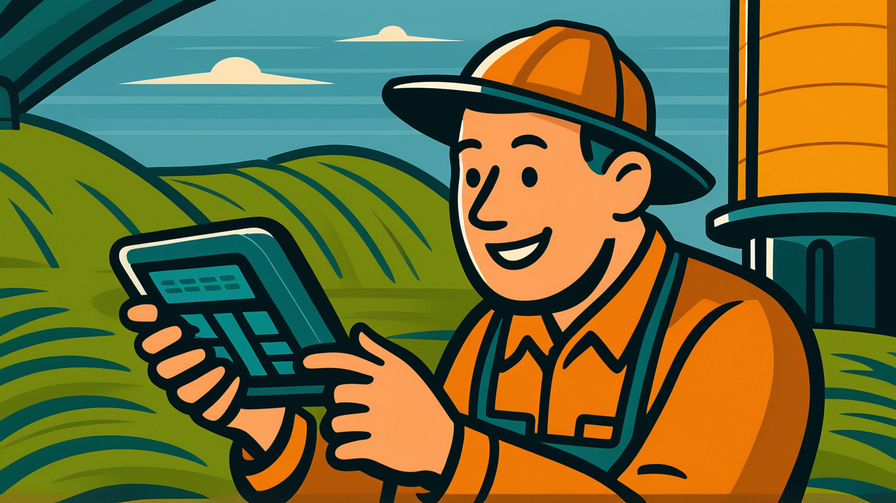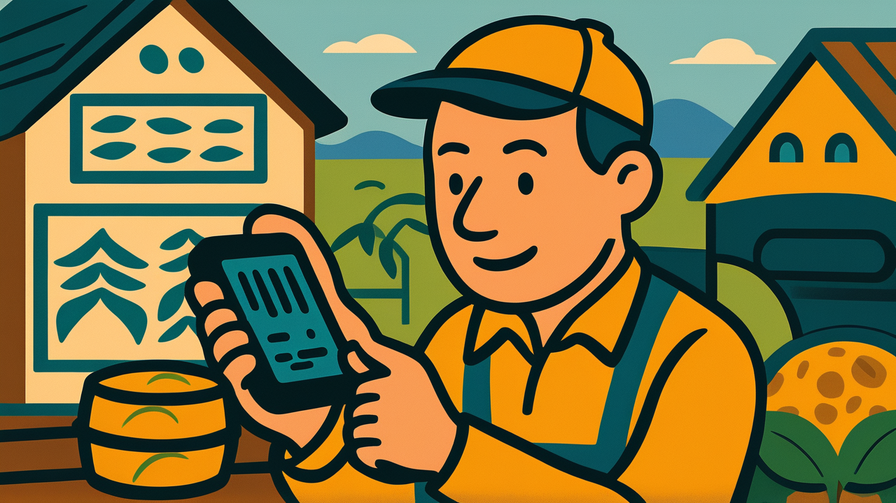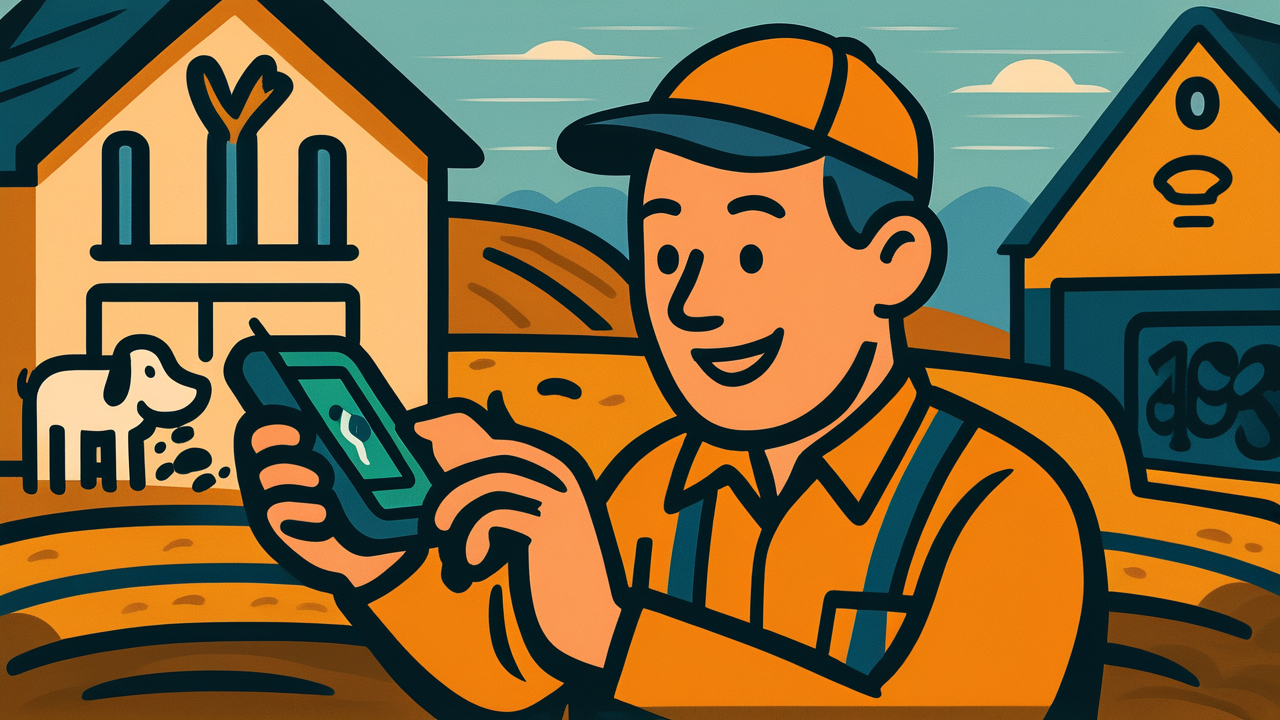[Disclaimer] This article is reconstructed based on information from external sources. Please verify the original source before referring to this content.
News Summary
The following content was published online. A translated summary is presented below. See the source for details.
Eurofins Agro Testing and trinamiX (a BASF subsidiary) have launched groundbreaking technology that allows farmers to instantly analyze animal feed quality using a handheld device. The trinamiX PAL Two spectrometer uses near-infrared (NIR) light to examine silage – fermented feed for cattle – providing nutritional information in real-time. Previously, farmers had to send samples to laboratories and wait days for results. Now they can test fresh maize, grass silage, clover silage, and other feeds immediately on their farms. The device connects to a mobile app that guides users through the testing process and displays results instantly. This technology helps farmers optimize feed formulations, leading to healthier animals, improved milk and meat production, and reduced environmental impact through more efficient feeding. The system uses artificial intelligence models trained on thousands of European feed samples to ensure accuracy.
Source: BASF Agriculture Press Releases
Our Commentary
Background and Context

To understand why this technology matters, let’s first learn about silage. Silage is fermented plant material – like pickled vegetables but for cows! Farmers harvest crops like corn or grass, chop them up, and store them in airtight conditions where beneficial bacteria ferment the plants. This process preserves the feed for months, ensuring animals have nutritious food year-round, especially during winter when fresh grass isn’t available.
Feed quality directly impacts animal health and farm productivity. Just like humans need balanced diets, farm animals require the right mix of proteins, carbohydrates, fats, and minerals. Poor quality feed can lead to sick animals, reduced milk production in dairy cows, slower growth in beef cattle, and increased greenhouse gas emissions from inefficient digestion.
Expert Analysis
The NIR (Near-Infrared) spectroscopy technology works by shining special light wavelengths through the feed sample. Different nutrients absorb light differently, creating a unique “fingerprint” that reveals the feed’s composition. It’s similar to how a prism splits white light into rainbow colors, but this device reads invisible infrared patterns to determine nutritional content.
The real innovation lies in making laboratory-quality analysis portable and instant. Traditional testing required:
• Collecting samples and shipping them to labs
• Waiting 3-7 days for results
• Paying $30-50 per sample
• Making feeding decisions based on outdated information
Now farmers can test multiple spots in their silage storage immediately, adjusting animal diets based on current conditions rather than week-old data.
Additional Data and Fact Reinforcement
The impact of feed quality on farming:
• Feed costs represent 60-70% of livestock production expenses
• Optimized feeding can increase milk production by 10-15%
• Better feed efficiency reduces methane emissions by up to 20%
• A typical dairy farm tests feed 50-100 times annually
• The device can analyze samples in under 30 seconds
European farms particularly benefit since EU regulations increasingly require documentation of feed quality and environmental impact. This technology helps farmers meet these requirements while improving profitability.
Related News
Agricultural technology is rapidly advancing to address global food security challenges. Other innovations include drones that monitor crop health, robots that milk cows, and artificial intelligence that predicts optimal planting times. The push for “precision agriculture” aims to produce more food with fewer resources as the world population approaches 10 billion by 2050.
Climate change adds urgency to these innovations. Extreme weather can dramatically affect feed quality – drought stressed plants have different nutritional values than those grown in ideal conditions. Real-time analysis helps farmers adapt quickly to these variations.
Summary

This handheld feed analyzer represents a significant leap in agricultural technology, transforming how farmers ensure their animals receive optimal nutrition. By providing instant, accurate nutritional analysis, the technology helps farmers make better decisions that improve animal health, increase productivity, and reduce environmental impact. As farming becomes increasingly data-driven, tools like this demonstrate how advanced technology can solve practical problems, making sustainable food production more achievable for feeding our growing global population.
Public Reaction
Farmers who’ve tested the technology report significant time savings and better herd health. Dairy farmer testimonials mention catching feed quality issues before they affected milk production. Agricultural advisors appreciate being able to provide immediate guidance during farm visits. However, some smaller farms express concern about the initial investment cost, hoping for rental or sharing programs to make the technology accessible.
Frequently Asked Questions
Q: How much does this device cost?
A: While specific pricing wasn’t announced, professional agricultural testing equipment typically ranges from $10,000-30,000. However, when compared to ongoing laboratory testing costs and potential production improvements, many farms find it pays for itself within 1-2 years.
Q: Why is instant testing better than lab testing?
A: Feed quality can change daily due to weather, storage conditions, or fermentation processes. Instant testing lets farmers adjust animal diets immediately rather than feeding based on outdated information. It’s like checking expiration dates on food before eating rather than assuming last week’s test still applies.
Q: Can this technology work for small farms?
A: Yes, though the initial cost might be challenging. Solutions being explored include equipment sharing cooperatives, rental programs, and advisory services where consultants bring devices to multiple farms. The technology is scalable – small farms benefit from the same accurate data as large operations.


